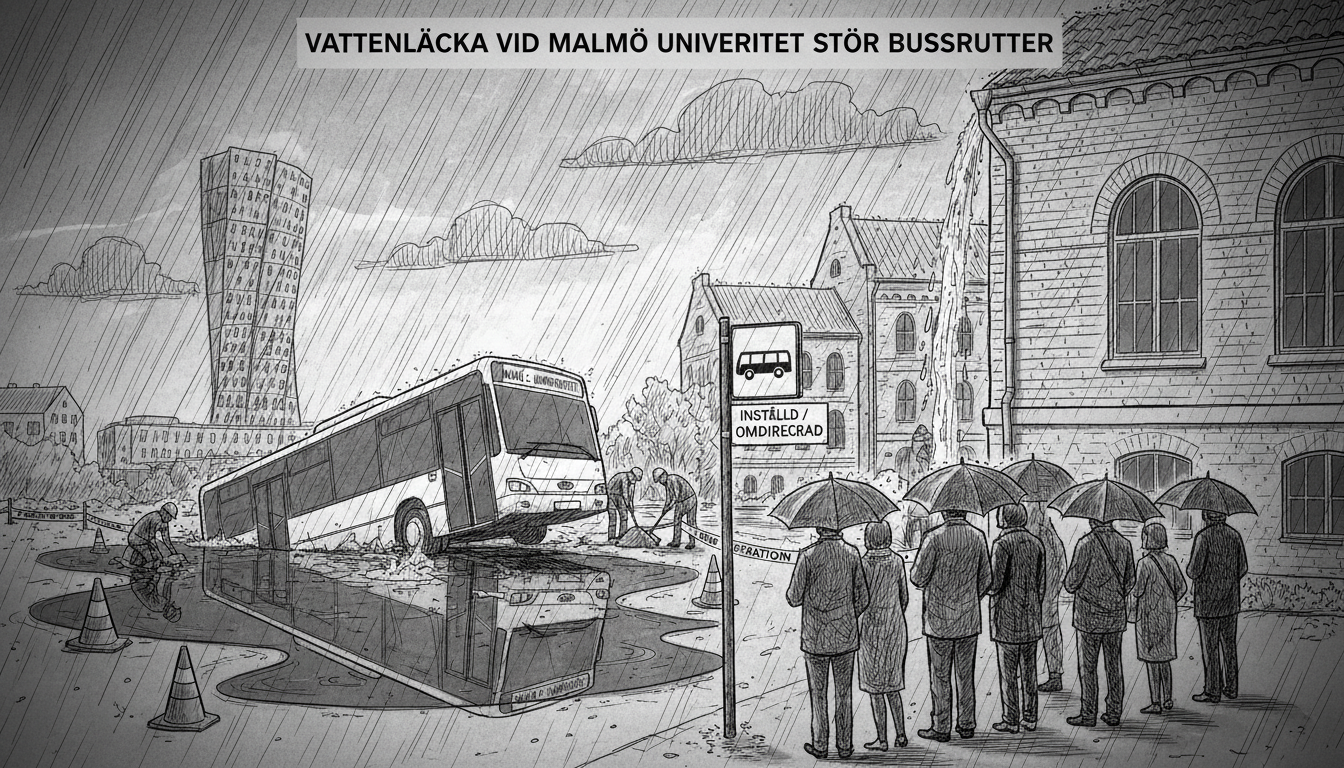A water leak near Malmö University has forced significant changes to public transportation in Sweden's third-largest city. The incident occurred in the university district, affecting two major bus lines during peak travel times.
VA Syd, the regional water and wastewater company, confirmed they are working to repair the damage. Officials expect to complete repairs by Friday. The company posted updates on their website about the ongoing situation.
Skånetrafiken, the regional public transport authority, had to reroute two bus lines because of the leak. Both lines received temporary route changes. One line, bus route 3, now misses several stops along its regular path.
Pontus Tobsjö, an operations manager at Skånetrafiken, explained the situation. He said both lines needed alternative routes. Route 3 specifically cannot serve some of its usual stops due to the water leak location.
Water infrastructure issues like this occur periodically in Swedish cities, particularly during seasonal transitions. Malmö's aging pipe network faces similar challenges to other Nordic urban centers built during rapid 20th-century expansion. The city has been gradually upgrading its infrastructure, but unexpected leaks still disrupt daily life.
For international readers, it's worth noting that Swedish public transportation typically maintains high reliability standards. When disruptions occur, authorities usually implement contingency plans quickly. The country's extensive digital infrastructure also helps communicate changes to passengers through mobile apps and electronic displays.
The immediate impact affects university students, staff, and residents in the surrounding neighborhoods. Commuters must allow extra travel time or find alternative transportation methods. The disruption comes during a busy academic period, creating additional challenges for those trying to reach campus.
Such infrastructure incidents raise questions about municipal maintenance schedules and prevention measures. While Swedish cities generally maintain high standards for public services, unexpected failures still occur. The response time and communication during these events often determine public perception of the handling.
What happens after the repair completes? Transportation officials will likely review the incident to identify any improvement opportunities. They might consider better early detection systems or updated contingency planning for similar future events. The costs associated with both the repair and service disruption will also factor into infrastructure investment decisions.
Malmö has experienced similar utility disruptions in recent years, though most get resolved within days. The city's ongoing development and climate changes may increase pressure on existing infrastructure systems. This incident serves as another data point in the broader conversation about urban resilience in Nordic cities.

